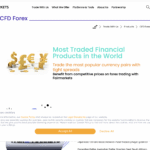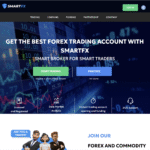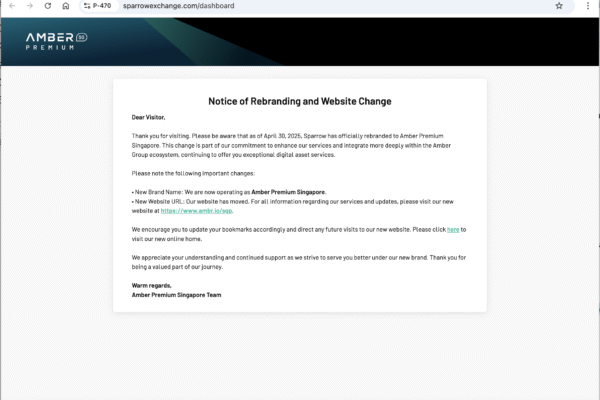Multiflex Scam Review – A Scam Platform
Multiflex Group (often just “Multiflex,” “Multiflex Group,” or related variants) is presented in various domains as an investment or crypto trading / asset management platform. Its promotional materials tend to promise above-normal returns, quick profit cycles, and strong investment growth with minimal involvement. In many cases, the platform is advertised online via social media ads, influencer endorsement, private messaging, or via referral networks. The pitch is often that you deposit funds (sometimes in crypto), the platform’s algorithm or investment strategy will multiply your deposit quickly, and then you can withdraw your profits.
Why Many People Are Raising Concerns
Though “Multiflex Group” may present itself professionally, there are numerous reports, observations, and patterns that point toward it exhibiting many of the hallmarks of an investment scam. Below are the key reasons why many believe it to be a scam:
1. Hidden Ownership & Lack of Transparency
-
The websites linked to names like “Multiflex AISolutions” or “Multiflex Group” often use domain registration services that hide or anonymize the owner’s identity. When people check WHOIS information, crucial fields such as owner address, company registration, or personnel are redacted.
-
Some sites are so new that they have very little track record. A newly registered domain, or one that changes hands often, is more suspicious.
2. Unrealistic Return Promises
-
The promotional materials tend to promise very high returns, often with short turnaround times and little disclosed risk. For example: “earn daily or weekly profits,” “double your investment,” “minimal effort needed.”
-
Legitimate financial investments rarely guarantee returns, especially high ones, and there’s always risk. When returns are described in absolute, superb terms, that’s a red flag.
3. Use of Persuasive Marketing & Social Proof
-
Sometimes, paid influencers or social media influencers are used to promote Multiflex-type platforms. These can be fake or misleading testimonials, which show users making huge profits.
-
There are frequent references to “account managers,” “mentors,” “coaches,” or “VIP investor groups,” all of which serve to increase trust and to create an aura of legitimacy.
4. Withdrawing Funds Is Difficult or Blocked
-
Many user reports (on forums, social media) note that they saw “growth” on their dashboards—that is, they saw their account balance increase, sometimes daily. But when they try withdrawing, they are met with obstacles: “verification fees,” “tax withholding,” “maintenance fees,” or additional deposits needed before withdrawal is unlocked.
-
Over time, communication becomes harder, and sometimes the account is locked or frozen, preventing withdrawal entirely.
5. Domain & Website Practices Raise Alarm
-
Some domains are very new (just a few weeks or months old). This makes it hard to track their history or to see long-term user feedback.
-
Domains often host multiple sites, sometimes with low reputation or suspicious content. Also, multiple suspicious domains may share the same server or IP address.
-
Hidden WHOIS data (owner privacy protection) often appears. While not always illicit, this feature is frequently abused by scam operators.
6. Poor External Verification
-
Searches for regulation, licensing, or credible company registration tend to come up empty or inconclusive.
-
There are few or no credible third-party audits or confirmations.
-
Independent reviews are often negative or ambiguous, and positive reports tend to lack verifiable proof (bank slips, transaction confirmations from trusted sources, etc.).
Common User Experiences & Complaints
From what has been gathered through forums, social media, consumer complaint sites, and some “scam checker” tools, here are recurring complaints from people who interacted with Multiflex Group or similarly named sites:
-
Delay in withdrawal: Users report that when they try to withdraw even small amounts, the platform delays indefinitely, citing “pending verification,” “tax forms,” or “system maintenance.”
-
Demand for extra payments: Before releasing funds, users are asked to pay extra fees—these might be called “compliance fee,” “unlocking fee,” “tax fee,” “account upgrade,” “insurance,” etc. These are often sizable, sometimes larger than the initial capital invested.
-
Account lock or disappearance: After repeated demands or after users ask questions, platform access gets restricted. Support stops answering, websites may go offline briefly or permanently, or URL/domain changes.
-
Fake growth with fake dashboards: The platform shows profits on dashboards, often inflated or entirely fictitious, to lure users into depositing more.
-
Emotional manipulation: Users are sometimes assigned friendly “account managers” who reinforce trust, encourage further investment, and minimize doubts. They may use urgency, social proof (“lots of others have already made money”), scarcity (“offer ends soon”) etc.
Analysis of “Scam Checker” Insights
Websites that evaluate site legitimacy (e.g. “Scamadviser” or similar) show some concerning signals when applied to certain Multiflex-related domains:
-
Low trust scores. Sites like “multiflexaisolutions.online” get very low trust ratings. They show that the site is very young, the owner is hidden, and there are crypto-services detected.
-
Domain age is tiny in many cases, meaning they have not had long time to build reputation or get regulatory oversight.
-
Shared hosting with other low-trust or suspicious websites.
-
Valid SSL certificates (meaning the site is encrypted) are present—which provides a veneer of legitimacy—but SSL alone does not guarantee trust.
These kinds of technical and reputation signals don’t necessarily prove a scam, but they strongly suggest one when combined with the behavioral patterns and user complaints described above.
Why Many Consider It a Scam
When you combine:
-
the unrealistic promised returns,
-
the hidden or anonymized ownership,
-
the pattern of demanding extra payments before allowing withdrawals,
-
losing access to funds or being blocked when trying to exit,
-
the emotional persuasion used in marketing,
you get almost the classic structure of a scam: lure → invest → profit illusion → inability to withdraw → disappear or cut off.
These are not just isolated incidents—they are repeated in many public reports regarding Multiflex-style platforms.
What Are the Red Flags to Watch For (Checklist)
If you or someone you know is evaluating Multiflex Group or any similar investment/trading platform, here are concrete warning signs to look out for:
| Warning Sign | What It Looks Like |
|---|---|
| High, guaranteed returns | Promises like “double your money,” “100% in short time,” “daily profit,” etc. |
| Hidden ownership or anonymous company info | Domain registration hides identity; no real address or verifiable contact info. |
| Frequent domain changes | Website URLs change often; old domain disappears or redirects. |
| Demands for extra fees before withdrawing | “Verification fee,” “processing fee,” “unlocking fee,” etc. |
| Pressure / urgency | Marketers push you to deposit soon; “limited time offer,” “only few spots.” |
| Positive testimonials without proof | Big profits shown, but no verifiable documentation; possibly fake identity testimonials. |
| No credible licensing or regulation | No mention of regulatory body; cannot find license in financial regulatory registries. |
| Communication issues | Support slow, evasive, stops responding once large sums involved. |
| Dashboard illusions | Balances increase on screen, but disappear when withdrawals attempted. |
| Shared hosting with suspicious sites | Same server or IP used by multiple red-flagged sites. |
Possible Motivations & Tactics (How the Scam Gains & Holds Control)
Understanding how the scam organizers keep people invested and delay complaints can help in identifying such operations. Here are common tactics that seem to be used by Multiflex Group / similar platforms:
-
Small initial returns / payouts
They may allow small “withdrawals” early on—this builds trust. Once you believe it works, you invest more. -
Account upgrades
Users are told to upgrade account levels (by depositing more), which are supposed to give better returns or access to better strategies or assets. These upgrade amounts are often where major profit is harvested by the scammers. -
Referral rewards
Encouraging users to bring in more people, promising commissions or bonuses. This turns users into unwitting promoters. -
Investments in crypto only
When funds are required in cryptocurrency, that makes it harder to trace or reverse transactions. Scammers often prefer crypto payments. -
Fake support and personal agent
They assign you someone to speak to, which builds a personal sense of trust. That agent then becomes the messenger of excuses when withdrawal is requested, gradually stringing along the user. -
Shutting down or disappearing
After a point, when too many people demand withdrawals, domain shuts, site access breaks, or support disappears altogether.
Areas Where Information Is Less Clear
Because these operations are not transparent, there are still unknowns concerning Multiflex Group. It’s important to note what is not confirmed:
-
Whether there is any lawful version or legitimate instance of “Multiflex Group” operating under that name somewhere in a regulated jurisdiction.
-
Exact scale of loss overall (how many people have lost what amounts).
-
Whether law enforcement has opened investigations in particular countries.
-
Whether some users may have actually made legitimate profits (though those reports are often thin on proof).
Takeaways
Putting together all of the pieces, the weight of evidence suggests that Multiflex Group exhibits many of the classic characteristics of an investment scam. While nothing is proven with 100% certainty without court decisions or formal regulatory findings, the patterns of behavior—hidden ownership, promises of high returns, withdrawal difficulty, pressure tactics—are deeply worrying.
For anyone considering engaging with such a platform, the key takeaways are:
-
Treat any “investment” with promised high returns and low risk with extreme skepticism.
-
Verify company registration, license, regulation, and transparency.
-
Always attempt small withdrawals first.
-
Keep detailed records of all interactions, payments, promises.
-
Avoid paying extra fees claimed necessary for withdrawal or “verification.”
Final Thoughts
The story of Multiflex Group is a cautionary one. It seems to follow a blueprint seen many times before: lure people in with promise, build false trust, then obstruct withdrawal when the dollars (or crypto) pile up. Even when things look polished—professional website, good marketing, friendly agents—the underlying practices appear to undermine legitimacy.
If you see or hear about platforms claiming to be Multiflex Group, it’s wise to treat them with suspicion unless there is clear evidence: real regulatory status, verifiable proof of past performance, transparent ownership, and easy withdrawal of funds.
-
Repor tMultiflexand Recover Your Funds
If you have fallen victim to Multiflex and lost money, it is crucial to take immediate action. We recommend Report the scam to BOREOAKLTD.COM , a reputable platform dedicated to assisting victims in recovering their stolen funds. The sooner you act, the greater your chances of reclaiming your money and holding these fraudsters accountable.
Scam brokers like Multiflex persistently target unsuspecting investors. To safeguard yourself and others from financial fraud, stay informed, avoid unregulated platforms, and report scams to protect. Your vigilance can make a difference in the fight against financial deception.
Author





